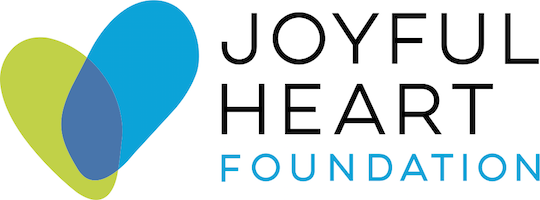You can leave this site quickly.
Learn more about Internet safety.
1in6 Thursday: The Emotional Pain Body, Part 1
My favorite psychological author is not a psychologist—although he has studied psychology, along with philosophy and literature. As a spiritual director and thought leader, Eckhart Tolle is beyond definition—he is not affiliated with any particular religion. In his books, (The Power of Now and A New Earth) he introduces what he calls the “painbody.” In a 2010 Huffington Post article he states that, “there is such a thing as old emotional pain living inside you. It is an accumulation of painful life experience that was not fully faced and accepted in the moment it arose. It leaves behind an energy form of emotional pain. It comes together with other energy forms from other instances, and so after some years you have a ‘painbody,’ an energy entity consisting of old emotion.”
This is not a new idea. The Apostle Paul referred to the flesh, Carl Jung described an archetype he called The Shadow, psychoanalysts coined the term introjects, and I talk about Witches in my book (Follow the Yellow Brick Road: How to Change for the Better When Life Gives You Its Worst). All of these have a notation of some kind of negative psychological entity that takes up residence in the human psyche (or soul/mind) that wreaks havoc within a person and then between persons. (Think of your last argument with your spouse or child. There was probably a good deal of painbody activated.)
In the next blog article, I will talk about what Tolle (and I) have discovered to be effective ways to “manage” the painbody, while also releasing all the positive energy that has been stuck in our psyche, freeing us to live emotionally intelligent (and thus happy) lives.
Here are a few characteristics of painbody worth briefly noting:
- t is an un-integrated negative psychological entity that comes in large part from negative experiences that were never fully processed and healed at the time. One of the most important roles of a parent is to pay attention to their child and when he or she becomes distressed, to intervene to help the child with their negative emotions. As they learn to integrate these emotions, children develop self-regulation, but when this fails to happen regularly, these negative experiences collate and coagulate in the brain/mind to create painbody.
- Everyone has some painbody. It is part of the human condition. (In fact, Tolle suggests that painbody of a nation is passed down to people within that nation or culture.)
- The painbody takes many forms and manifestations: hurt, hate, depression, self-hate, anxiety, fear, alienation, despair, emotional drama (making mountains out of molehills), blame, even physical illness.
- The painbody can be active or dormant. In this way and many more, the painbody is like a virus. It lies dormant until something internal (like a negative thought) or external (you’re late for a flight) triggers the painbody and then it erupts. Some fortunate people have only occasional outbreaks of painbody. Others live in an almost-constant state of pain and misery—always unhappy, depressed or angry.
- The painbody takes over the mind. Most often we identify with the painbody, thinking as it thinks. For example, the painbody makes it easy to believe that “I am a loser” or perhaps “my spouse is an alcoholic” even when there is no outside reality. (Just like viruses take over the DNA in our cells, the painbody literally hijacks the thinking part of the mind.)
- Like any thing that is alive, it needs to eat and the painbody feeds on energy like itself; it feeds on pain. Against all reason, it looks for things to make it mad or sad or scared and then keeps the feeding going. It will instigate a fight with a spouse. It will passive-aggressively provoke a reaction from a boss or client. All of us parents have experienced our children deliberately provoking us to anger . . . to feed their newly developing painbody. When we have ample opportunity to avoid conflict or negativity about ourselves, we fail to do so. We have a hungry painbody to feed.
There are few things that contribute more to an adult’s painbody then being abused as a child. These violations are often ignored (if not caused) by the caregiver and/or hidden from the caregiver out of shame or fear. Because of this, the trauma is not properly processed at (or near) the time of the trauma and therefore slips into the unconscious and becomes part of the painbody. This augments the painbody and makes for many reactivations throughout their life.
I’ll outline ways to manage these reactivations in my next post.

- By Sam Alibrando, Ph.D.
Sam Alibrando Ph.D., is a clinical psychologist in Pasadena, CA. He has worked for over 30 years with individuals and families using a “collaborative healing” process, where the client and the professional team-up to achieve a therapeutic and growing process—together. Specializations include adults abused as children and sex addiction. Dr. Alibrando is nationally respected as an organizational consultant, speaker and author of Follow the Yellow Brick Road: How to Change for the Better When Life Gives You Its Worst. He served as President of the San Gabriel Valley Psychological Association and liaison to the California Psychological Association (CPA); Director of Fuller Psychological & Family Services; and as an Adjunct Professor at Fuller’s Graduate School of Psychology.
The mission of 1in6 is to help men who have had unwanted or abusive sexual experiences in childhood live healthier, happier lives.
1in6′s mission also includes serving family members, friends and partners by providing information and support resources on the web and in the community.
Joyful Heart and 1in6 invite you to visit 1in6.org for info, options and hope, and to learn more about our partnership and Engaging Men initiative here.
The views expressed above are not necessarily those of the Joyful Heart Foundation or 1in6.




Your Voices